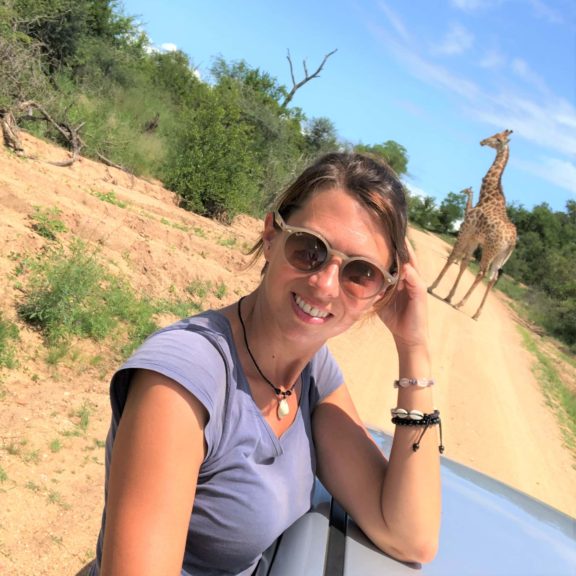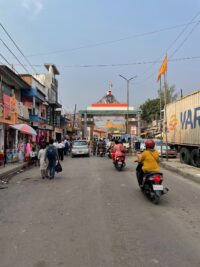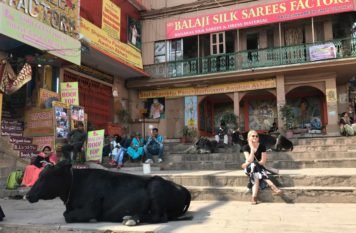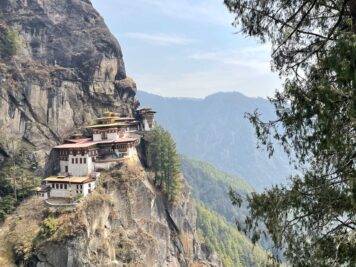I’d done a lot of hiking and homestays in Kyrgyzstan. That’s one sort of travel.
Whenever I thought about travelling onwards to Uzbekistan something completely different came to mind – the Silk Road, that legendary trading route linking the East to the West, along which the world’s great civilisations traded valuables like spices, incense, tea, ivory, horses, medicine and so on; and exchanged skills, technology and religion, too.
Cities like Samarkand, Bukhara and Khiva flourished along the route, and even today their very names conjure up images of camels and caravans, desert oases, and everything at once luxurious and exotic.
Ancient civilisations, ruins and relics. That’s another sort of travel.
I decided I’d visit all three famous cities. But first I had to get onto the Silk Road myself.
Getting a visa for Uzbekistan is no longer the nightmarish tangle of beauracracy it once was; I dropped off the paperwork at the Embassy in Bishkek and picked the visa up a week or so later without incident other than the fact that the pickup took two tries since the first time, the consular officer was nowhere to be found. But that’s nothing as far as getting visas goes for police states, military dictatorships, formerly stifling communist regimes, and all the other kinds of places I tend to spend my holidays in.
The border was busy on Kyrgyzstan’s side: a queue – more of a throng, really – surged up towards the chainlink fence and seemed to stretch all the way back to Osh. I made sure I was visible to a police officer up ahead: sure enough, he shouted ‘Tourist!’ and the crowd parted like the Red Sea. I skipped the queue (and the next two after that), and flashing me a gold-toothed smile while continuing to shout ‘Tourist! Tourist!’ the police office escorted me to the checkpoint and handed over my passport for me.
Stamped out and good to go, I scooted ahead of all the guys wheeling boxed refrigerators over the border on trolleys (seriously, there were quite a few), and crossed to the Uzbek side where I got a seat in a share-taxi heading for the first town beyond the border, Andijon.
During the ride to Andijon the driver called his brother-in-law Bek, who spoke perfect English. We made friends over the phone, and Bek picked me up in the city. We drove around together for a while in search of another car to make the trip through the mountains to the capital, Tashkent. I was happy to be on the road in another new country, even though this next driver dampened my enthusiam for Uzbekistan a bit by driving with reckless abandon on the mountainous road, only slowing to a sedate 90 km/hr whenever he wanted to send a text or call somebody (which was startlingly often).
Five taxis in one day seemed like enough driving on the Silk Road for a while so when I went to Samarkand later on, I took the train.
One of the oldest and most influential cities in central Asia, Samarkand was a rich trading centre along the route and its mosques and minarets have been vigorously restored and maintained over the centuries since.

I went to marvel at the Registan – medieval Samarkand’s central bazaar. Today the vast plaza is a showcase for three of the world’s oldest still-standing medressas (schools or universities), built between the 15th and 17th centuries. The plaza is incredible – all soaring minarets and intricate blue and turquoise tile-work.



And then there’s Timur (or Tamerlane) the infamous and bloodthirsty conqueror who swept through here in the late 14th century, establishing Samarkand as the glorious capital of his entire realm.

He lies interred beneath the Gur-E-Amir mausoleum. Like any good tyrant (or mausoleum) there’s a popular legend associated with his grave. A Soviet anthropologist opened Timur’s crypt in 1941 and as the story goes, he found inscribed on the grave a message that ‘whoever opens this will be defeated by an enemy more fearsome than I’ – and Hitler attacked the Soviet Union the very next day.

Inside, I craned my neck back and stared up at the ornate detail on the domed cupola high above; it’s almost a sensory overload.

There are several tombs under the monument – Timur shares his final resting place with some of his sons and most revered teachers.

I arrived in Bukhara on a Friday without realising it – weekends don’t matter much when you aren’t working – and I was just in time for the annual Silk and Spice Festival. The old town was packed out with live music, singers and dancers, and extra bazaars set up selling silk and best of all, super-fragrant spices heaped up on tables and smelling absolutely incredible.
Historically, this city is famous for a couple of things: being deeply religious, and suffering a lot of plagues.
On the religious side of things, Bukhara was once known as the ‘Pillar of Islam’, and home to hundreds of mosques and medressas.

According to my guide book, one of the medressas today offers a show that is a unique combination of wrestling, puppetry, and cock-fighting (I’m not sure how you’d combine cock-fighting with much of anything at all, let alone a puppet show). I saw no such thing myself, although as part of the festival there was a lot of wrestling going on in the square in front of the Kalon minaret.
The oldest surviving mosque in all of central Asia is here: Maghoki-Attar dates from around the 9th century. It’s the holiest building in this city of holy buildings – it was built on the ruins of a 5th century Zoroastrian temple and an even earlier Buddhist one.

Regarding the other claim to fame, Bukhara’s citizens fetched their water from a couple hundred stone pools dotted around the city – a practice which resulted in plagues that afflicted the city and shortened the average inhabitant’s lifespan to not much more than thirty years. Just one of these pools remains today in the centre of the old town (and it’s only for gathering at, not drinking).

Khiva, the third famous settlement I visited on the Silk Road, had a different role on the trading route: it prospered as a slave market until its eventual take-over by the Russians in 1873.

I liked the massive baked-mud ramparts and surprisingly quiet tangle of little streets in Khiva’s old town more than the noisy splendor of Samarkand.

So I found my own use for the Silk Road too. A beautiful change of scenery; a different sort of travel than what I’d already experienced in Kyrgyzstan; a roadtrip through ancient history.
Read More
For more of my adventures (and misadventures) in Uzbekistan, check out the rest of my stories from the road.




This Post Has 5 Comments
Wonderful photos. I enjoyed my vicarious trip to the Silk Road this morning 🙂
this was so interesting! Even though I’ve had Uzbekistan on my list for a couple of years (an thus made people stare in disbelieve) I have not really thought about the different places to visit there apart from Sarmarkand. Thanks for sharing!
No problem. Make sure you go to Nukus when you get to Uzbekistan….then they’ll really stare in disbelief;)
Those roads didn’t look too silky to me…